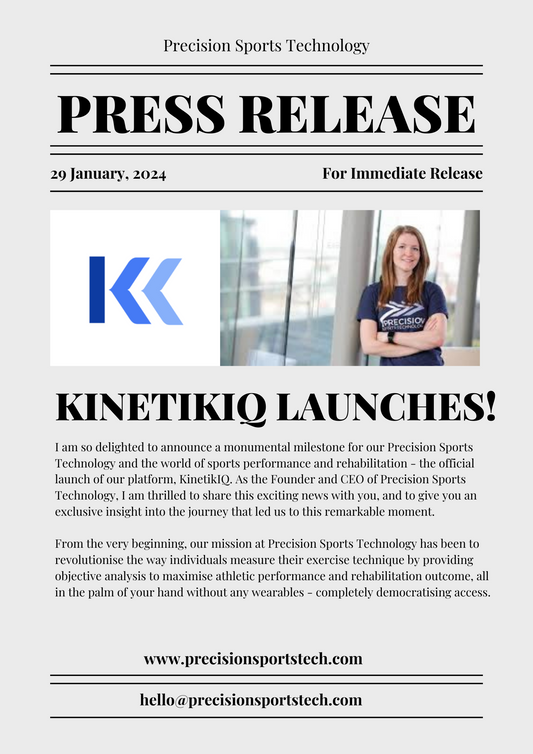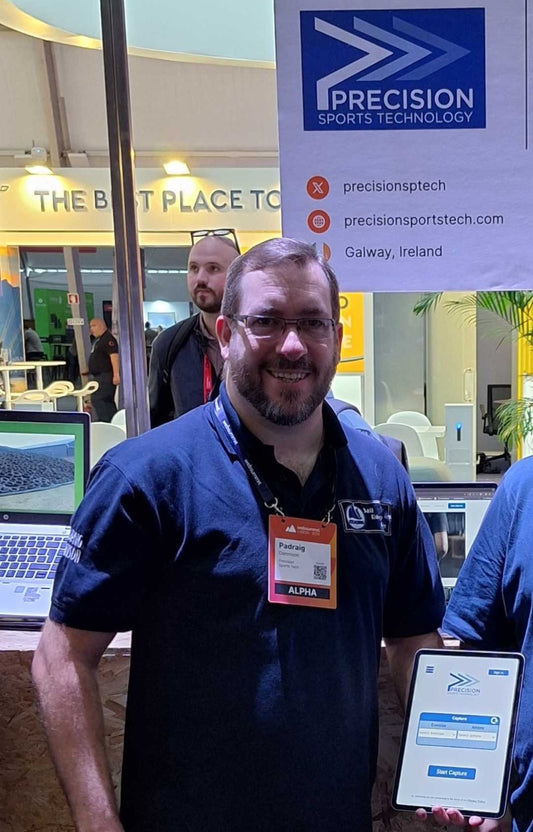In elite sport and even at the highest levels of amateur sports, the difference between winning and losing can come down to the smallest details. One such detail that is often overlooked is the assessment of range of motion (ROM) in athletes. Range of Motion is the degree of movement that occurs at a joint, and it is an important aspect of athletic performance that is often associated with injury risk and can have a significant influence on performance potential.
One possible explanation for the link between range of motion limitations and increase injury risk is attributed to athletes with limited ROM having muscle-tendon units that may not be sufficiently prepared to store and release the high amount of elastic energy generated during repeated high-intensity movements that are commonplace in most sports which can increase the likelihood of injury.
Range of motion is a factor in many sports injuries
Restricted range of motion is a factor in some of the most common sports injuries including:
-
Groin and hamstring muscle strains
-
Patellar and Achilles tendinopathies
-
Anterior Cruciate Ligament (ACL) injury
-
Lower back pain
-
Femoropattelar pain
Assessing ROM is particularly important in sports that require a high degree of flexibility, such as gymnastics, dance, or martial arts. However, it is also important in field-based sports, such as soccer, rugby or gaelic games - both at elite level and the upper levels of amateur sport where the level of training is comparable to elite sport. In these sports players need to regularly accelerate and decelerate suddenly, jump and land and change directions rapidly and this can adversely impact range of motion without proper athlete care and monitoring.

In assessing ROM, sports scientists and coaches can identify areas of the body where mobility is limited, and work to improve these areas through targeted stretching and mobility exercises. This can help athletes to move more efficiently and with greater ease, reducing the risk of injury and improving performance.
The degree of flexibility required will vary from sport to sport - for instance high ROM values are required to perform technically demanding sports like gymnastics, diving, figure skating and various martial arts including taekwondo. In team sports, the level of flexibility required will also differ depending on what position a player plays.
Generally speaking, low ROM values are associated with higher injury levels - while elite sports athletes will tend to have higher ROM values, higher ROM values don't ensure injury prevention.
Range of motion can be adversely affected by excessive training loads or a busy competition schedule as this can lead to physical stress and muscular fatigue. Without sufficient recovery plans, this can result in muscle tightness and a reduced ROM.
Fitness coaches and strength & conditioning coaches will typically test range of motion through a straightforward physical examination such as a functional movement screen (FMS) and physiotherapists will use goniometers to test the angle of the joints or comparing both sides of the body using muscle activation techniques (MAT) assessments.
Furthermore, assessing ROM can also help to identify any imbalances or asymmetries in the body that may be affecting performance. For example, if a soccer player has limited range of motion in one hip, this could affect their ability to execute certain movements on the field, such as a sidestep or a change of direction. By identifying and addressing these imbalances, athletes can improve their overall performance and reduce their risk of injury.
Corrective Range of Motion Exercises
Range of motion exercises are used to help prevent injury, reduce pain, restore ROM but also to improve joint performance, depending on the situation. Range of motion stretching exercises fall into three categories:
Active Range of Motion (AROM) - movement by the athlete with no external force aiding the movement
Passive Range of Motion (PROM) - the movement is applied by a person (e.g. physio) or a passive motion machine while the athlete is completely relaxed when receiving the external force
Active Assisted Range of Motion (AAROM) - this is a hybrid of the previous two categories where the athletes own joint movement is partially assisted by the external force.
Assessing ROM values can also be a useful, quantifiable metric for tracking athlete progress over time. By regularly assessing ROM values, coaches and sports scientists can determine whether an athlete's flexibility is improving or declining, and adjust their training programs accordingly.

ROM is a crucial aspect of elite sports performance and data accuracy is vital in ensuring teams and individual athletes can maximise their availability for participating in sport and contributing to the best of their ability. By identifying and addressing limitations in flexibility, athletes can improve their overall performance and reduce their risk of injury. Coaches and sports scientists should therefore prioritise ROM assessments as a key part of their athlete monitoring and training programs.
Using Precision Sports Technology, teams and individual athletes can easily monitor range of motion with a high degree of accuracy rapidly with minimal set-up time while also tracking athlete progress over time. To find out more or join our beta trials,get in touch!




